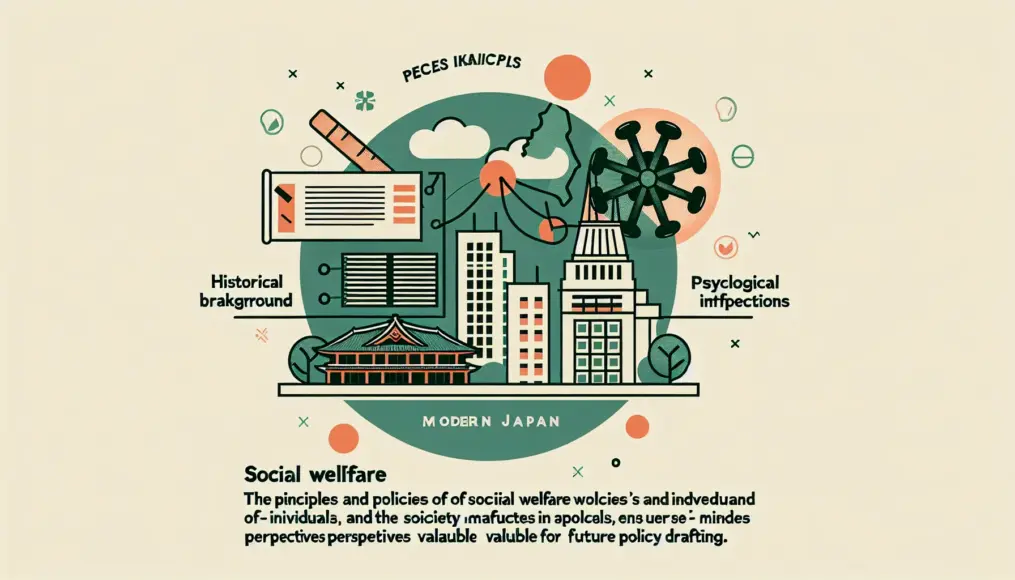Abenomics stands out as one of the most notable economic policies in Japan. It’s crucial to grasp how the approach of monetary easing has influenced the economy. Since its introduction, how has this policy transformed Japan’s economic landscape, and what implications has it had for our daily lives?
In this article, we will delve into the specific effects of Abenomics’ monetary easing policy, exploring its underlying intentions and goals. We will take a closer look at the economic trends following the implementation of this policy and discuss potential future prospects. So, we invite you to read on!
- An overview of the background and objectives of Abenomics
- An analysis of the specific economic effects of monetary easing
- A discussion on the ethics of economic policy and its societal impact
What is Abenomics?
Abenomics refers to a series of economic policies implemented to revitalize Japan’s economy. A key component of this approach is monetary easing, which aims to invigorate the Japanese economy. Abenomics has garnered significant attention as a strategy to promote economic growth and escape deflation.
The context for these policies includes prolonged economic stagnation, declining prices, and various challenges associated with an aging society. To address these issues, let’s delve into the objectives and intentions behind Abenomics in the following section.
Background of the Policies
The foundation of Abenomics lies in the economic downturn that has persisted since the early 2000s. Various factors, including the Lehman Brothers crisis and the Great East Japan Earthquake, have negatively impacted the Japanese economy, leading to a continuous decline in growth rates. In light of these challenging circumstances, the government was called upon to introduce new economic policies.
Abenomics was initiated in 2012 with the establishment of Shinzo Abe’s administration. Central to this policy framework are the “three arrows”: monetary easing, fiscal stimulus, and growth strategies. Notably, monetary easing represents a significant effort by the Bank of Japan to overcome deflation through massive liquidity provision.
- Abenomics is a policy for economic revitalization
- The backdrop is the economic downturn of the 2000s
- The government was required to implement new policies
Objectives and Intentions
The primary aim of Abenomics is to stimulate economic growth and increase employment. Specifically, it seeks to enhance corporate investment and promote consumption through monetary easing. Additionally, by setting an inflation target, Abenomics aspires to break free from deflation.
Moreover, improving the living standards of citizens is also a critical goal of Abenomics. As the economy grows, it is anticipated that wages will rise and employment will expand, ultimately leading to an improved quality of life. This approach aims to achieve sustainable economic growth.
- The goals are economic growth and increased employment
- Monetary easing is intended to invigorate corporate investment
- Aiming to enhance the quality of life for citizens
Understanding Japan’s Monetary Easing Policy
At the heart of Abenomics lies the monetary easing policy, designed to inject a substantial amount of liquidity into the market by the Bank of Japan (BOJ). This strategy employs various methods, including quantitative easing and changes to interest rates, which are interconnected and serve as vital tools for revitalizing the economy.
By implementing this monetary easing policy, businesses find it easier to borrow funds, leading to expected growth in investment and employment. Let’s take a closer look at the specifics.
Implementation of Quantitative Easing
Quantitative easing involves the BOJ purchasing large quantities of government bonds and other financial assets. The goal is to ensure that financial institutions receive a steady flow of funds, thereby increasing lending. By boosting the money supply in the market, this policy aims to encourage inflation and help the country emerge from deflation.
The anticipated effects of quantitative easing include rising asset prices and increased consumer spending. Notably, it makes it easier for companies to invest in equipment, contributing to overall economic revitalization.
- Quantitative easing involves large-scale purchases of government bonds and other assets
- Financial institutions receive increased funding, leading to more lending
- Aiming for deflation recovery and economic revitalization
Changes in Interest Rate Policy
As part of the monetary easing strategy, changes to interest rate policies have also been implemented. The introduction of zero and negative interest rate policies has lowered borrowing costs, making it easier for both businesses and individuals to secure funding. This is expected to stimulate consumption and investment, thereby invigorating economic activity.
Changes in interest rate policy have significant implications for financial markets. A prolonged low-interest environment allows companies to secure funding more easily, enhancing their competitiveness. However, there are concerns that normalization of interest rates will be necessary in the long run, highlighting the importance of maintaining a balanced approach.
- Changes in interest rate policy are a component of monetary easing
- Zero and negative interest rates lower borrowing costs
- While there are expectations for increased economic activity, the need for normalization is also emphasized
The Economic Effects of Monetary Easing
The monetary easing policy under Abenomics has had a significant impact on the Japanese economy since its implementation. Key indicators, such as fluctuations in inflation rates and the state of the labor market, directly illustrate the effects of this policy. Understanding these economic outcomes helps us grasp how monetary easing influences the dynamics of the economy.
In this section, we will take a closer look at the specific economic effects brought about by monetary easing. Let’s start by examining the changes in inflation rates.
Fluctuations in Inflation Rates
When monetary easing policies are enacted, it typically leads to an increase in inflation rates. By supplying more funds into the market, the Bank of Japan enhances consumers’ purchasing power, which in turn boosts demand. As a result, prices tend to rise, moving inflation rates closer to the target levels.
Since the introduction of Abenomics, inflation rates in Japan have indeed experienced fluctuations. Notably, changes in energy prices and the cost of imports have played a significant role, making the trends in inflation complex. However, it is clear that monetary easing has helped Japan make strides in overcoming deflation.
- The tendency for inflation rates to rise due to monetary easing
- Increased purchasing power and demand from enhanced fund supply
- Anticipated effects of overcoming deflation
Impact on the Labor Market
Monetary easing policies also have a substantial effect on the labor market. With easier access to funding, companies are more likely to invest, resulting in the potential creation of new jobs. Particularly in a low-interest-rate environment, businesses find it easier to make cautious investments, raising expectations for job expansion.
Since the implementation of Abenomics, Japan has seen a decline in the unemployment rate alongside an increase in non-regular employment. The revitalization of the labor market is expected to improve the quality of life for citizens. However, challenges regarding job quality and stability remain, making future policies crucial.
- The effects of monetary easing on the labor market
- The potential for new job creation due to easier funding
- The contribution of a revitalized labor market to improved living standards
A Philosophical Perspective on Monetary Easing
Monetary easing policies not only have a direct impact on the economy but also raise philosophical questions. It’s crucial to reflect on the ethics of economic policy and its long-term effects on society in order to gain a deeper understanding of the significance of these policies. Behind monetary easing lies a set of values and theories aimed at promoting economic growth, but we must consider whether these justifications hold up and what kind of society they ultimately create.
In this section, we’ll take a closer look at the ethical aspects of monetary easing policies and their long-term effects on society. Let’s start by examining the ethics of economic policy.
The Ethics of Economic Policy
Economic policy inherently has ethical dimensions, and this is particularly evident in monetary easing, where issues of resource allocation and fairness come to the forefront. While such policies can benefit specific sectors or groups, they may also disadvantage others. This imbalance raises questions about the legitimacy of the policies in question.
On one hand, monetary easing can invigorate capital markets and foster corporate growth; however, it doesn’t necessarily benefit everyone equally. Therefore, it’s essential to consider fairness and sustainability in the formulation of economic policies.
- Economic policy has ethical dimensions
- Benefits for certain sectors may lead to disadvantages for others
- The need to consider fairness and sustainability
Long-Term Impacts on Society
While monetary easing can stimulate short-term economic growth, it also has various long-term implications. For instance, prolonged monetary easing could lead to asset price bubbles and widening inequality. Such outcomes could result in social instability and conflict.
Moreover, sustained monetary easing increases the risk of future interest rate hikes. Therefore, it’s vital not to lose sight of long-term perspectives in the pursuit of short-term gains. Achieving sustainable economic growth requires a balanced approach to policy management.
- Balancing short-term growth with long-term impacts is crucial
- Excessive monetary easing may create asset bubbles and inequality
- Thoughtful policy management is necessary for sustainable economic growth
Conclusion
Abenomics’ monetary easing policies have had a significant impact on the Japanese economy. Through measures like quantitative easing and changes in interest rates, the government has aimed to escape deflation and stimulate economic growth. However, it’s also crucial to consider the ethical implications and long-term effects of these policies. By understanding the economic benefits and associated risks, we can make more informed policy decisions.
Moreover, it’s important to recognize that monetary easing doesn’t just promote short-term economic growth; we must also evaluate its broader social implications. Achieving sustainable economic policies requires a balanced approach.
- Abenomics’ monetary easing policies promote economic growth
- Aiming to escape deflation, but ethical considerations are essential
- Understanding long-term impacts is key to sustainable policy
Economic policies are deeply intertwined with our lives, so let’s continue to deepen our insights. We’d love to hear your thoughts and opinions on this article!



Comment